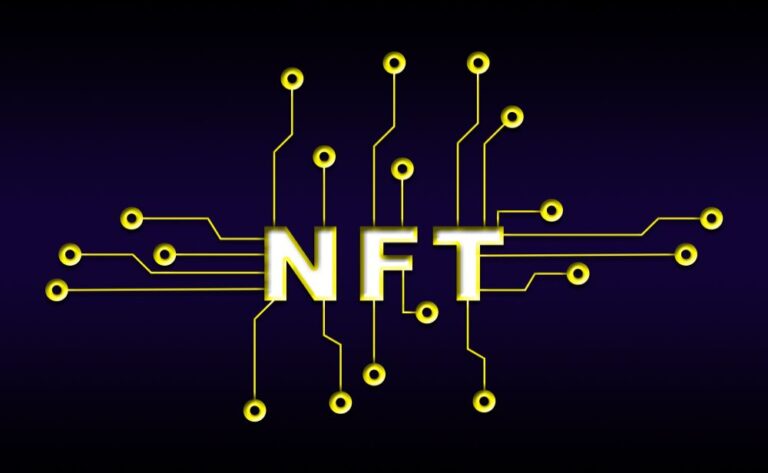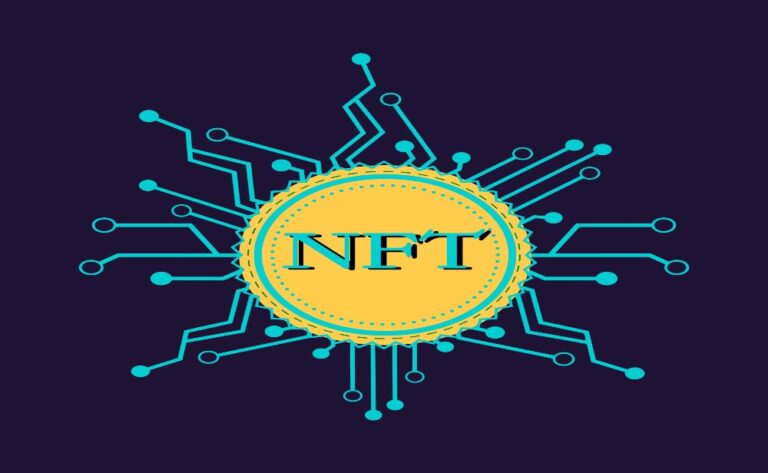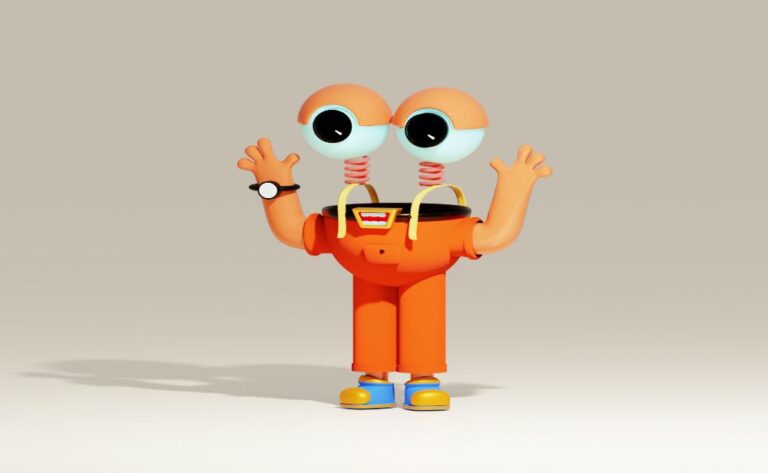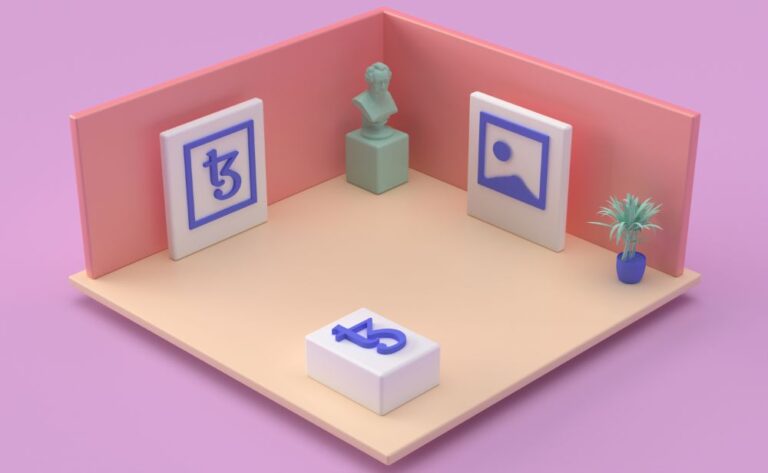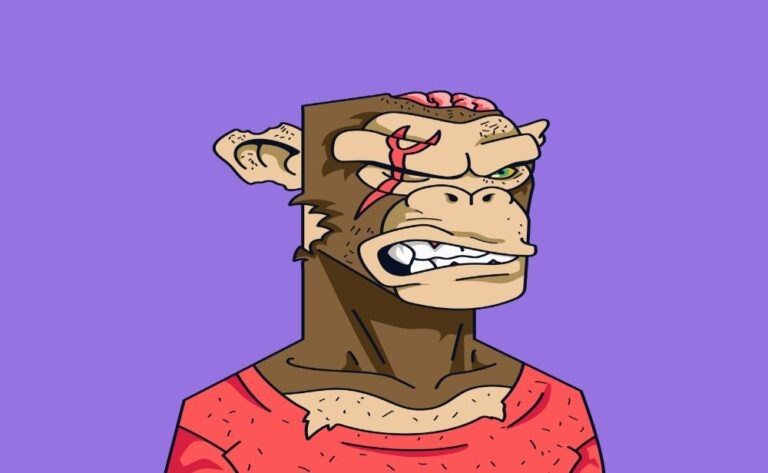
Non-fungible tokens, also known as NFTs, were on the scene just as the world was beginning to get a handle on the notion of cryptocurrencies, which only served to further confound everyone. Is it possible to put money into NFTs? And… what exactly are they in the first place?
You are aware that they are connected to blockchain in some way. And something that is related to the arts. And for some insane reason, somebody shelled over $69 million to purchase it.
But regardless of how much you know about non-financial instruments, the age-old question of whether or not NFTs make a decent investment still stands.
Let’s begin at the very beginning and delve into the wacky and weird world of NFTs.
What do you mean by NFTs?
Your first step, as it should be with every purchase you make, should be to have an understanding of the asset you are purchasing. NFT stands for “non-fungible token.” To further understand what that means and why the “non-fungible” aspect is such a major concern, let’s first go over what tokens are.
A blockchain is a huge unified global digital record that can be read, added to, but never overwritten, hacked, or corrupted. A token is a digital asset that stores value on a blockchain. A blockchain is a digital asset that stores value on a blockchain. A token can be used to represent a variety of digital assets, such 10 bitcoins, 50 shares of a firm, or any other digital good or service.
The vast majority of tokens that are stored on a blockchain can be fungibly exchanged for one another. Every single token that represents 10 bitcoins is precisely the same, just as every single $100 dollar and every single share in GOOGL are the same.
One and only one of a non-fungible token exists. Because there is no other token on the blockchain that is identical to it, it is entirely unique.
An NFT enables a user to produce a one-of-a-kind data string that can be stored on a blockchain. For instance, a string that effectively conveys the message that “Chris Butsch is the owner of the original Nyan Cat.”
NFTs, or non-fungible tokens, are, in a nutshell, digital proofs of ownership. They are appropriate for use as conveyance deeds for automobiles, legal papers, event tickets, valuables, and even real estate.
NFTs are a particularly significant development for digital artists since it enables them to create what is known as a “original.”
A little bit more on that is coming up.
How exactly do NFTs function, and what do they have to do with cryptocurrencies in general?
Ethereum, the second most valuable cryptocurrency by market cap, is the driving force behind NFTs (ETH).
The Ethereum blockchain was introduced in 2015, and it allows users to not only record stores of currency but also strings of data that are then added to the blockchain. The rising popularity of Ethereum can be attributed to a number of factors, including its capacity to produce NFTs, its superior speed over Bitcoin, and its lower impact on the environment.
To put it another way, NFTs are stored on a blockchain.
The enigmatic figure known as Satoshi Nakamoto devised the initial blockchain in 2009, and it could only record transactions involving bitcoin. However, it didn’t take long before people started wondering, “What else is there that we can store on a blockchain?”
This line of thinking led to the development of the Ethereum blockchain, a next-generation blockchain that makes use of a technology known as smart contracts and enables users to store one-of-a-kind data strings (non-fungibles).
Even if the Bitcoin blockchain can only store information that can be interpreted as figuratively saying this:
User ID 15631316331 is the owner of 1.163 bitcoins.
The data that figuratively indicates this can be stored on the blockchain for Ethereum thanks to its functionality.
Kayla H owns Nyan Cat
In its most basic form, that is what an NFT is. A “certificate of ownership” for a work of art or other digital asset is referred to as a non-fungible token, or NFT.
It should be noted that the real artwork is not stored on the blockchain. Keeping records on a blockchain requires an exorbitant amount of resources and money to maintain. This means that JPGs and GIFs are not kept there (for now). The only thing that the Ethereum blockchain is responsible for storing is the NFT, which is the record of who currently possesses it.
When it comes to uploading and storing non-fungible tokens (NFTs), the Ethereum blockchain is, as of right now, the most preferred location. The arrival of competitors is imminent. However, considering that the much more advanced Ethereum 2.0 blockchain will be released in 2022, Ethereum is expected to continue to be the most advantageous location for the storing of NFTs.
Which Non-Football Teams Have the Highest Average Salary?
Would you be willing to pay 69 million dollars for the right to say that the digital version of this collage created by the digital artist Beeple is “yours”?
Or, if that’s a little too pricey, how about we settle on a sum of just 600,000 dollars for Nyan Cat?
These are just two instances of the most costly NFTs that have ever been sold, demonstrating that the price of a digital artwork can very closely reflect the price of its tangible, real-world equal.
Naturally, not all NFTs get prices comparable to those of Rolls-Royce automobiles (or a Rolls-Royce factory).
Kimberly Parker, an artist as well as a data scraper, claims that the median sale price of an NFT is less than $200, and that’s before fees, which total to approximately $85 per listing on average.
How to Make an Investment in NFTs
Let’s start window shopping for NFTs now that we’ve explored the fundamentals of these instruments. Where can you get these goods, and how do you go about doing so?
On Amazon, unfortunately, you won’t be able to find any NFTs for sale (not yet, at least).
OpenSea is currently the most significant NFT marketplace in the world.
OpenSea operates more similarly to eBay than it does to Amazon, with the majority of NFTs selling in auction format. However, much like on eBay, sellers still have the option to advertise a buy-it-now price for their items.
The prices are not displayed in US dollars but rather in ether. The Ethereum blockchain is powered by the transaction token known as ether, sometimes known as the “fuel.”
OpenSea isn’t the only NFT marketplace – there’s also Binance NFT, Rarible and others. But for now, OpenSea is the biggest and best location to start.
How to Purchase Your First NFT
Since NFTs are generated and purchased using crypto, the actions involved in buying an NFT are a little more involved than buying a toothbrush on Amazon.
1. Register a new account with OpenSea or competitor NFT marketplace.
2. Create a crypto wallet and acquire some ether. (Keep in mind you’ll pay petrol fees.)
3. Link your crypto wallet to your OpenSea account.
4. Start bidding on NFTs.
You may buy Ether on practically any of the main crypto exchanges like Coinbase or Gemini. But if you’re just getting started, how much Ether should you buy?
Well, none to start. You don’t need to fill your wallet only to explore for NFTs. You can wait until you discover an NFT you like, then acquire some ether to fund your transaction.
Why Do People Buy NFTs?
Now you may be wondering, “Who’s buying these products and why?”
If most NFTs don’t include anything substantial or even any copyright, why are people putting all this money in them?
Well, individuals invest in NFTs for many of the same reasons they invest in real art, including, but not limited to:
1. To assist creatives and digital artists – Some NFT consumers just wish to help the digital artists generating them.
2. As an investment – Many NFT customers regard their purchase as an investment, expecting the artist’s work would rise in value quicker than the ether they spent on it.
3. The joy of collecting — Prefer many real-world art collectors, a tiny percentage of NFT customers may just like the act of collecting digital art.
I like to imagine that 3F Music, the Dubai-based music company that spent $500,000 for the “Disaster Girl” NFT, might’ve felt a combination of all three motivators.
1. It wanted to support Zoë Roth and thank her for giving so much joy to the internet.
2. 3F considered an NFT of a legendary global meme as a suitable investment. (It probably is.)
3. Judging on its Twitter history, 3F just likes buying NFTs.
Next question: Are NFTs a worthwhile investment? More on that later. For now, let’s talk about how to sell NFTs.
How to Create and Sell NFTs in 7 Steps
Before we talk fees and why NFT sales aren’t as glorious and successful as the headlines suggest, here’s a description of the procedures involved in listing your first NFT on OpenSea:
1. Create a crypto wallet.
2. Link your wallet to your OpenSea account.
3. Buy some ETH. (Keep in mind you’ll need to pay some costs.)
4. Create a “collection” of your paintings.
5. Generate an NFT from your collection.
6. List your NFT for sale.
7. Market your NFT to your fans.
When someone buys your NFT, you’ll be compensated in ETH — therefore an eighth step may be to convert your ETH back into USD.
So what are the fees involved with NFT sales?
How Much Does It Cost to Generate a Single NFT?
The cost to mint (or generate) and list an NFT for sale is roughly $85, according to NFT’s Street. And you’ll also owe the exchange a part of your selling price.
Prices can vary significantly based on your selected platform, the value of ETH that day, etc. But that’s the rough number to plan for.
$85 is a lot. But when compared to the expense of art supplies, gallery space, booth rents, etc., it’s actually not so awful.
But is it worth it?
How Much Can You Make Selling NFT Art?
It absolutely relies on whether your audience is hungry for your NFTs. If you’re just starting out, you may want to lower your expectations.
Just the headline of Kimberly Parker’s compilation of NFT data (“Most artists are not generating money off NFTs and here are some graphs to prove it”) paints a pretty clear image.
Parker published the following findings. (“Primary Sales” refers to an artist’s initial NFT sale on OpenSea.)
In short, most NFTs sell for about $200 — if at all — and many barely cover the listing expenses. Plus according to Parker’s data, 67.6% of sellers have not had a secondary sale.
Many artists struggle to sell their NFTs simply because there’s such a limited consumer pool. In order to purchase an NFT, a buyer must:
1. appreciate art,
2. understand NFTs, and
3. purchase cryptocurrency.
At now, barriers two and three hinder a wider audience from dabbling in NFTs.
That said, maybe over time NFTs will go mainstream enough to remove some of these restrictions — particularly, allowing consumers with no crypto understanding to buy them with cash.
Pros and Cons of NFTs
Pros
• Empower digital artists – The ability to etch a “certificate of ownership” onto the blockchain has allowed creators of virtual art to create and sell “originals.”
• Showcase the power of blockchain technology – NFTs have surely helped millions more individuals and organizations comprehend the possibilities of blockchain technology beyond a ledger for bitcoin transactions.
Cons
• High listing fees – Listing prices as high as $120 per NFT are a barrier for lesser-known artists.
• Limited buyer pool – Purchasing NFTs requires a crypto wallet with ETH and a grasp of what NFTs are — drastically limiting the buyer pool.
• Environmental impact — Ethereum is contemplating a move to an eco-friendly proof of stake (PoS) paradigm in 2022. But until then, several artists criticize the rise of NFTs due to their tremendous environmental impact.
Is an NFT Investment Right for You?
All things considered, is an NFT a sensible investment?
1. If you’d like to support the artist, yes.
The most sound and rational reason to buy an NFT these days is to support an artist that you believe in.
NFTs are a major risk for artists – they cost time and money to manufacture, and many artists may not be aware of the limited consumer pool until it’s too late.
Therefore, you can genuinely make an artist’s day by purchasing their NFT and flouting it on social media, helping them generate more visitors.
2. If you’d like to profit, probably not.
If investing in cryptocurrency itself is 100% speculation, investing in NFTs is much more so.
Simply said, NFTs are “not primarily an investment” and are “even crazy than investing in crypto.” That’s coming from Vignesh Sundaresan (as MetaKovan), the guy who paid $69 million for the Beeple NFT. He told Bloomberg that anyone trying to benefit from NFTs is “taking a significant risk.”
Beeple told CoinDesk in March 2021, “I do think there is a bubble,” and sure enough, NFT sales dropped in April. Melissa Gilmour, founder of NFT agency Lily & Piper, remarked, “A reduction in value was inevitable.” As the initial enthusiasm faded, NFTs encountered teething pains with oversaturation, compatibility concerns and an increase in scams.
But by late July, investors were again bullish on NFTs. Trading volume topped $10.7 billion in Q3, according to CNBC, largely fueled by backing from A-Listers like Shaq and Snoop Dogg.
But even if a Snoop Dogg NFT seems like a decent purchase, which one should you buy? Will there be a buyer for your specific NFT in three months? Three years?
Therein lies the issue of investing in non-fungibles. There’s no assured buyer on the other end of your investment like there is with shares of stock, less so one that will pay a better price than you paid.
Will some NFTs rise to the value of a house? Probably.
Does that make them a good investment? No.
If you’re trying to build your money in a way that involves substantially less time, effort and danger, check out our guide, “How to Invest $50k.”
Bottom Line
NFTs are both fascinating and empowering. And they allow digital artists to sell their creations in an entirely different way.
However, contrary to what a few high-ticket sales imply, they’re not a hidden cash cow for creative types. High fees, technical restrictions and a restricted consumer pool make NFT generation a dangerous possibility – for now.
